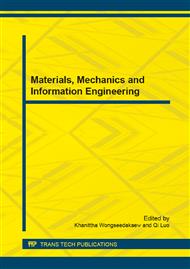p.149
p.155
p.161
p.165
p.169
p.175
p.181
p.187
p.195
Simulation Analysis and Experiment Research on Vehicle Interior Adaptive Active Noise Control System
Abstract:
In the MATLAB/Simulink environment through the simulation analysis, has determined the NFXLMS algorithm of the filter order and the convergence factor control parameters in the vehicle adaptive active noise control system used; adaptive active interior noise control system was constructed in a light bus, the tested vehicle engine was conducted noise cancellation control when its work in 1080rpm and 2400rpm; the results show that, the overall amount of noise reduction of driver's right ear position respectively 9.7dB (Lin) and 8.9dB (Lin).
Info:
Periodical:
Pages:
169-174
Citation:
Online since:
January 2015
Authors:
Price:
Сopyright:
© 2015 Trans Tech Publications Ltd. All Rights Reserved
Share:
Citation:


